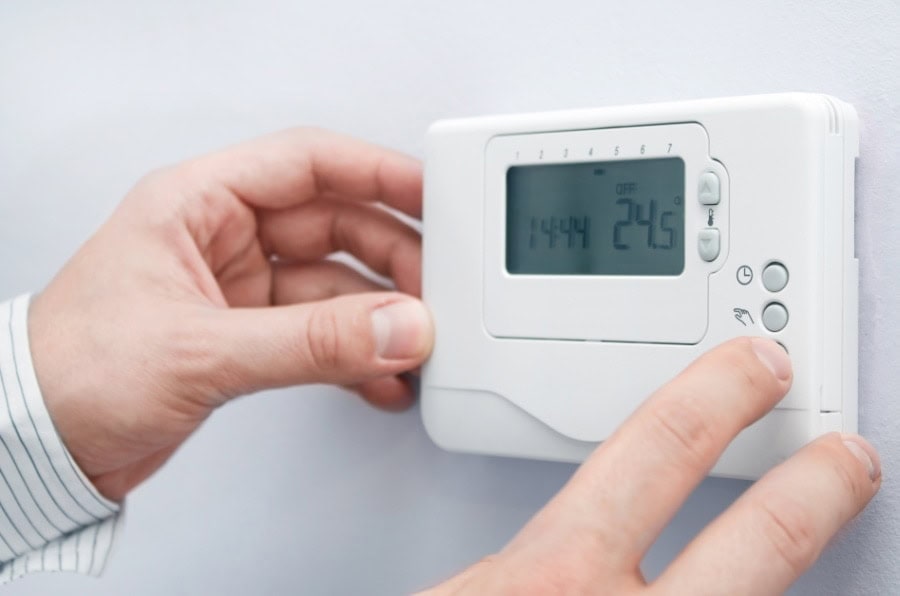What Kind of Thermostat is Best for My Family?

There are many different kinds of thermostats available to Oregon homeowners. The three most common varieties are non-programmable, programmable, and smart. No matter what kind you choose, a thermostat has one basic function. It controls your heating and cooling system to make your indoor air climate the temperature that you want it to be. You set it to the temperature that you want your home to be. It then tells the heating and cooling system what to do to get your home’s climate to this temperature.
The thermostat is able to monitor and maintain your home’s indoor climate. In the winter you set it to heat. In the summer you set it to cool. You also decide if you want the fan to be on constantly, or if you only want the fan on only when the heating and cooling system needs the fan to operate. If your home’s air temperature is already at or very near the temperature that is currently set on the thermostat, then it directs the heating and cooling system to do nothing. In winter when the temperature outside dips, your indoor air temperature will go down too. The thermostat will detect that the current air temperature has fallen below your desired setting, and will direct your heating system to activate and heat the indoor air. When it detects that the air has reached the desired setting, it then directs the heating system to stop. It follows the same procedure in the summer but in reverse, and with the cooling system.
Non-Programmable Thermostat
The standard non-programmable thermostat is the most common, least expensive and easiest to use. This is the one most people grew up with in their homes. The round Honeywell unit designed in 1953 has become so embedded in our American way of life, that it has made it’s way to the Smithsonian National Museum of American History. And it is still in use today.
The most common thermostat in use today is the basic LED display non-programmable thermostat. The controls on this basic thermostat are as follows | Fan = Auto / On | System = Cool / Off / Heat | Temperature Adjustment = Up Arrow / Down Arrow. Pros: Many people favor a simple mechanical design with physical switches. There isn’t much to this unit, so there isn’t much that can go wrong. Cons: You need to remember when you adjust the thermostat, you’ll need to re-adjust it back to your desired setting later. This is the least energy efficient of these three options.
Programmable Thermostat
The programmable thermostat is more energy efficient. You can have a home and away setting. When you are home, you have the temperature set at your ideal comfort setting. When you are away you can have it set to a setting more conducive to saving energy. The climate will be less comfortable, but you won’t be there anyway. The key is to remember that it takes a bit of time for your home’s climate to get to your ideal setting, so make sure to allow for that in the programming.
Pros: The programmable thermostat will save energy, and prolong the life of your heating and cooling system.
Cons: The programmable thermostat is a bit more expensive in the initial investment than the non-programmable thermostat. Some may argue that starting and stopping your system is more taxing than the energy that it saves.
Smart Thermostat
The new breed of thermostat, the Smart Thermostat, learns the behaviors of your home. By using WIFI, a smart thermostat can be controlled by your computer, tablet and smart phone remotely. This is why they are called smart. Once a smart thermostat has been in place for a while, it can adjust itself. It can show you energy consumption in real time.
Pros: You can control your climate remotely from within your home or away form your home. You can monitor your home’s energy usage.
Cons: This is the most expensive option.
Contact the experts!
